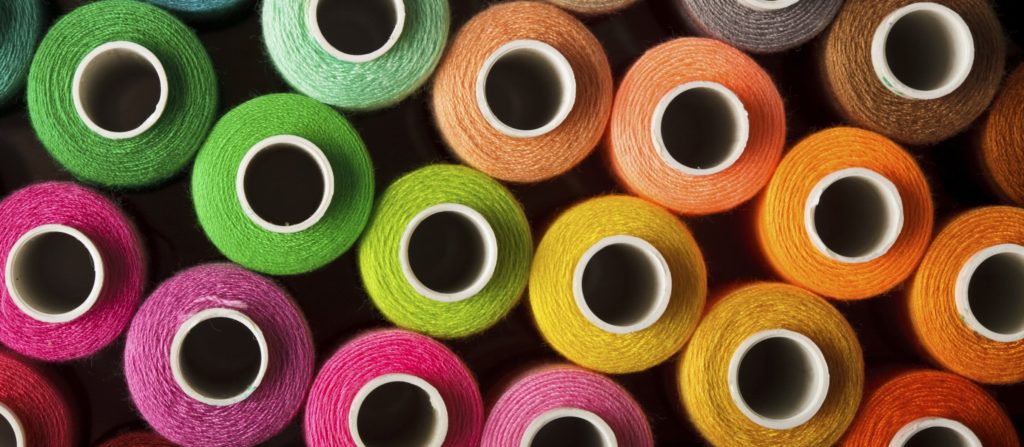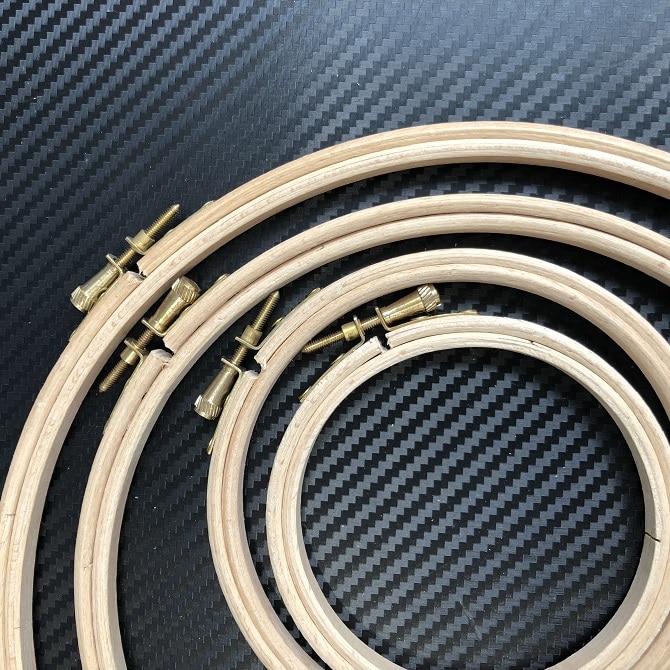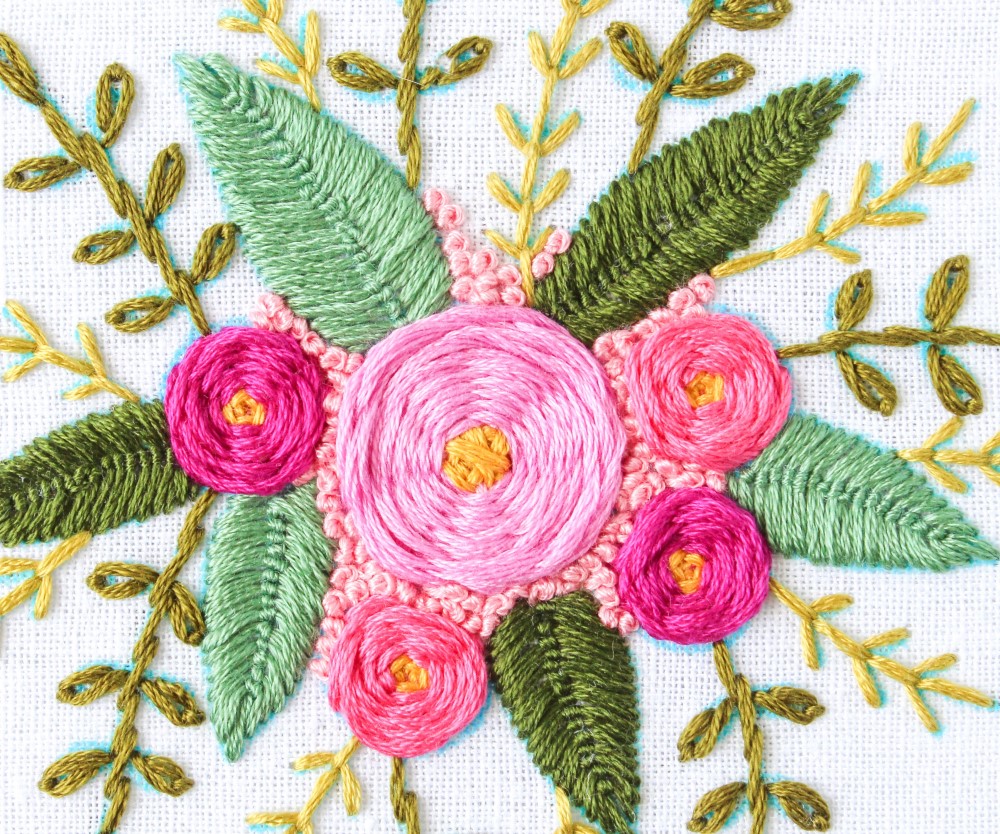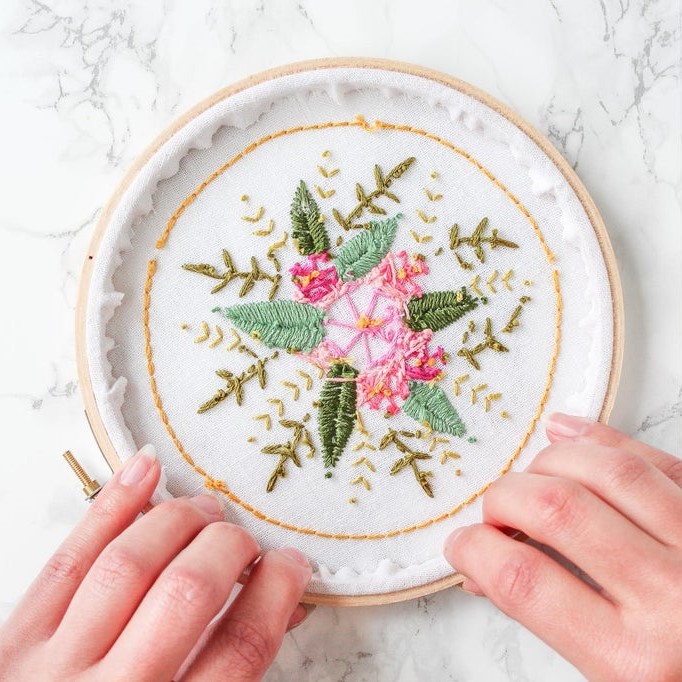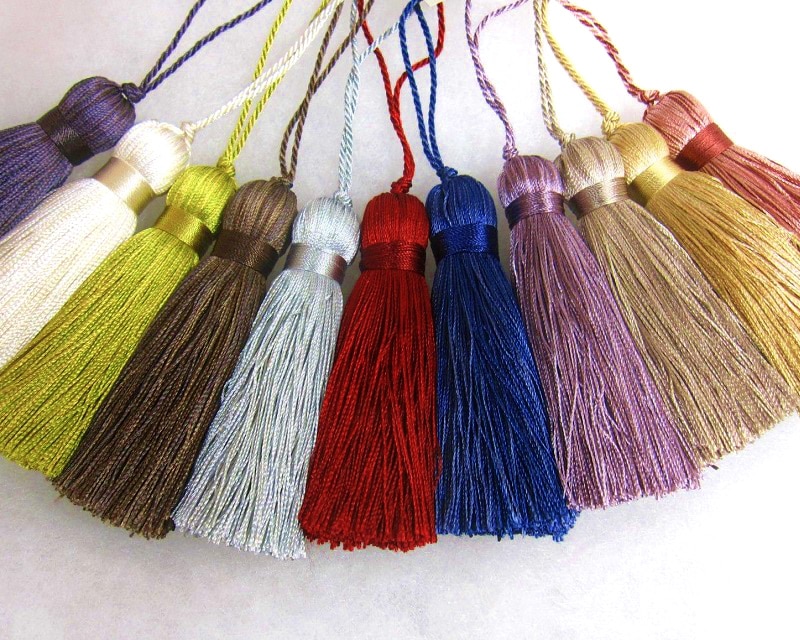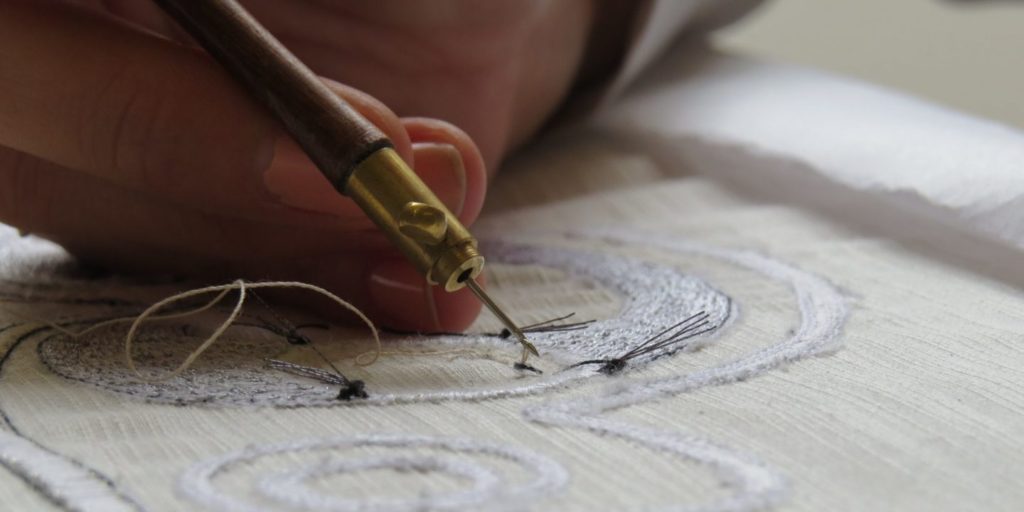

Embroidery is a fun and relaxing art. Getting started with it can be a little daunting and intimidating. You have to wrap your head around the few basic stitches before advancing to other myriad options. You have no choice but to enhance your skills on the different types of stitches to create embroidery masterpieces. With the multiple types of embroidery stitches, techniques and designs available, there is no limit to your creativity.
Normally, the most popular and basic types of embroidery like open work, void work, outline work, and counted thread work are mixed, crossed and combined to come up with spectacular embroidery designs. Read on for detailed information about essential embroidery stitches and the most popular embroidery techniques. Whether you are an embroidery newbie or an advanced beginner, the information will help you handle just about any embroidery project.
If you master these essential embroidery stitches, you earn a ticket to seamless enjoyment of the art that embroidery is. You will be able to handle all kinds of embroidery projects thrown at you.
This is one of the most popular stitches. It is mostly used to create the outline of the embroidery and is a top preference for weaving and wrapping.
Also known as straight stitch, you can use it to sew nearly everything. The running stitch is pretty basic and super-easy to learn. Though it is adaptable and can be made complex. For instance, you can adjust its length and spacing to change its look.
This is the simplest stitch to learn. It is one of the basic stitches that you are likely to use the most. You cannot do without the backstitch because it pairs well with other stitches. It is mostly used for various types of outlining but you can also use it for weaving and wrapping. The stitch is also adaptable. It can transform into the more decorative Pekinese stitch with a few adjustments.
This is the ultimate stitch for a borderline boundary. It forms a row of linked stitches that make it look unique. You can work the chain stitch in various ways but you first need to master working it forward and reverse.
From the name, you’d assume you can only use this stich for embroidering stems but that’s not the case. You can use it on any line of your stitching, plus, it works great for both curves and straight lines. It is also a basic stitch, best known for creating smooth outlines.
Like all the other stitches, the stem stitch is adaptable. You can adjust its width or use it for fill stitching provided you are consistent with the length.
This is a stitch often used for outlining designs like floral stems. It is the most suitable for delicate lines and curves. When done continuously, the stitch looks like a mini-chain stitch. Working the stitch is almost similar to working a backstitch but upside down.
Making the stitch involves splitting or piercing the previous stitch. A split stitch is what you need to work slightly textured and strong lines of embroidery.
French knot isn’t the easiest to learn but it is worth the efforts. It is a common embroidery stitch and most embroiders prefer it for making textured fills and many other design elements. To achieve the French knot, you need to wrap the needle to form a knot on the fabric’s surface.
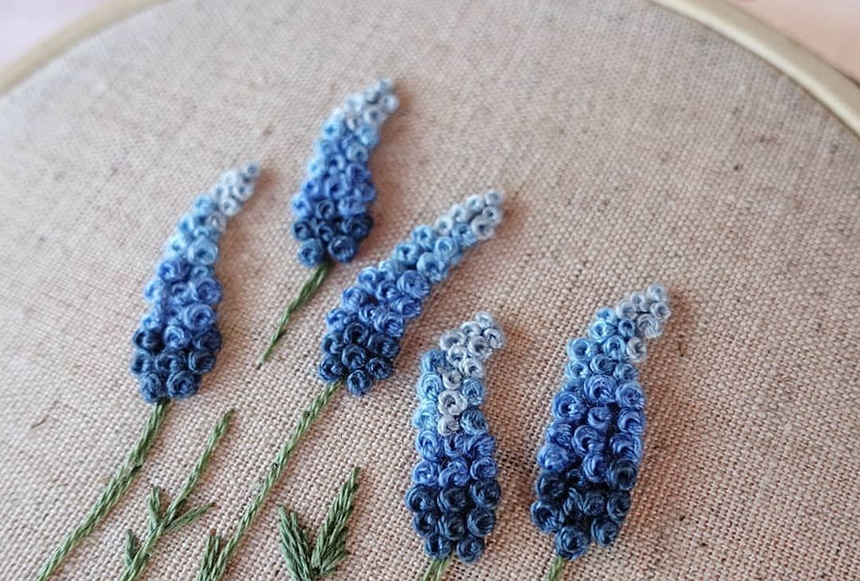
Quick tip: Hold the working thread firm but no too tight.
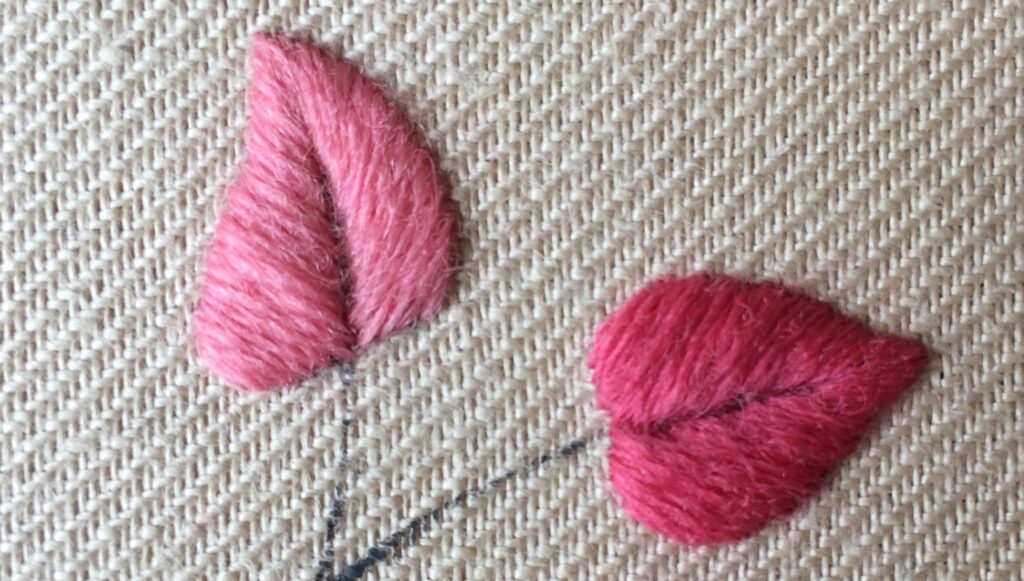
This is a classic embroidery stitch mostly used for filling an area. It has variations but the basic satin stitch is just a series of stitches worked close to each other. The only challenge with achieving this stitch is getting the length and proximity of the series of stitches right. Otherwise, it couldn’t be simpler.
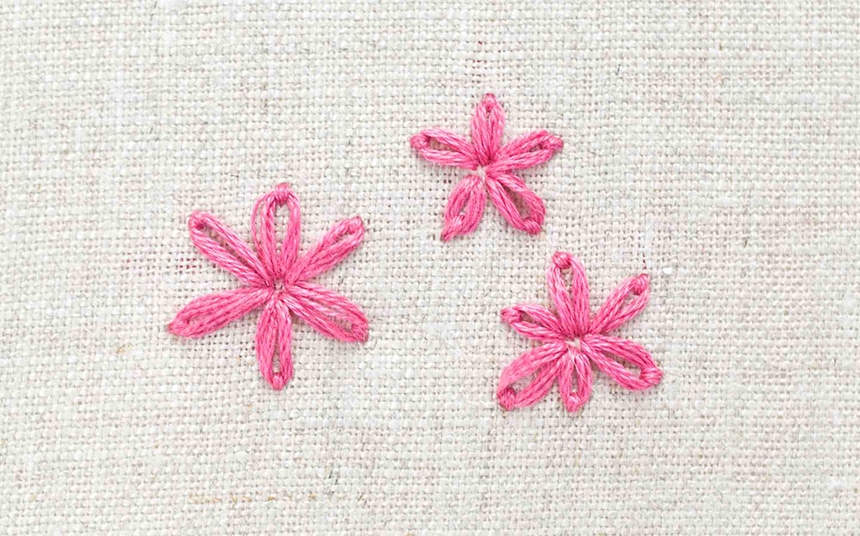
Also commonly known as single chain, the detached stain stitch is what you need to make lazy daisy flowers, leaves and other designs. It’s pretty similar to the standard chain stitch, only you have to work with just a single link.
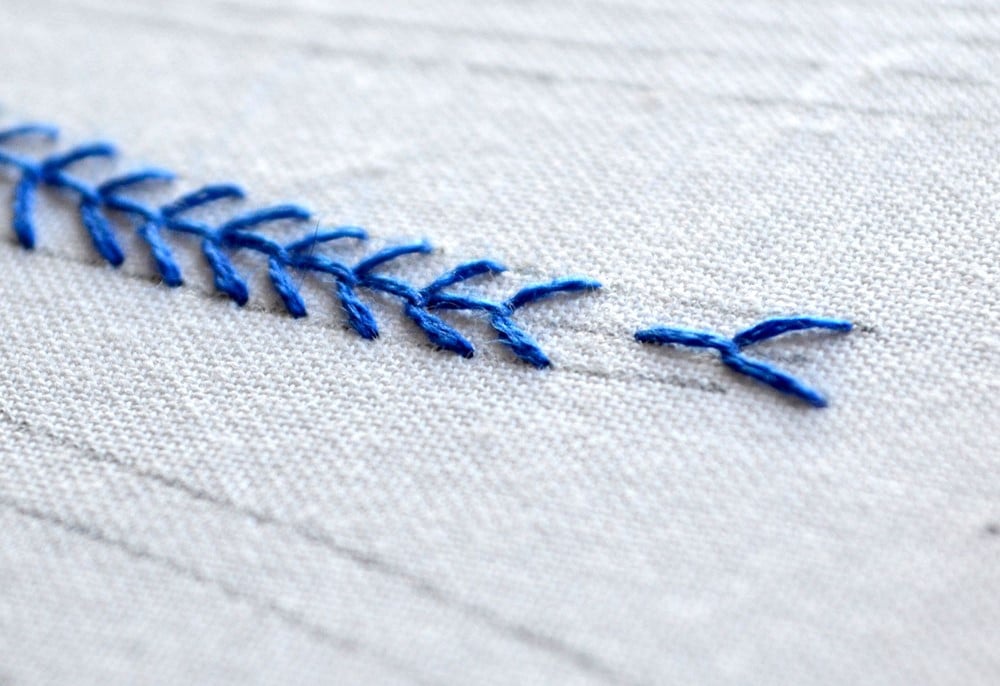
The fly stitch is somewhat similar to the detached stain stitch. The only difference is that instead of making a teardrop or a petal, it forms a soft-curve or a V-shape. You can work it in different ways, like in a row, in a radius, or scattered as a fill.
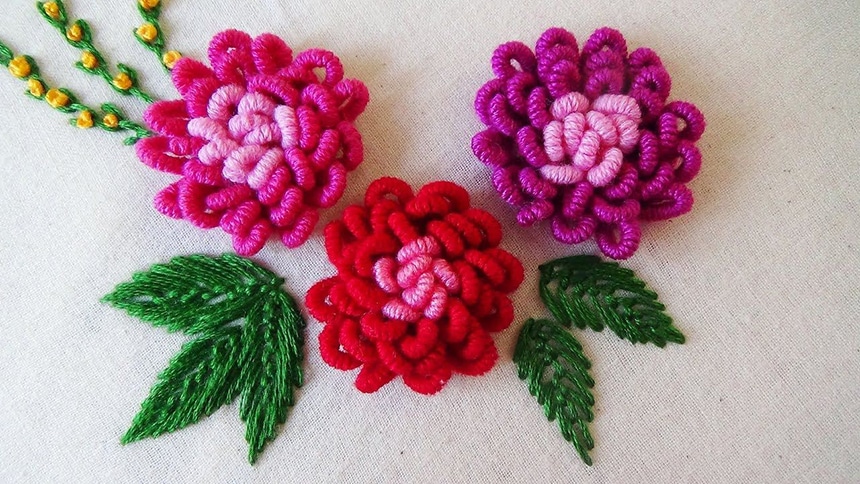
This is one of the most advanced embroidery stitches. It needs patience and a lot of practice. As much as it is not for the faint hearted it is essential. A bullion knot is like super-long French knot that can make pretty roses. You can easily learn by making smaller ones fast before advancing to bigger ones.
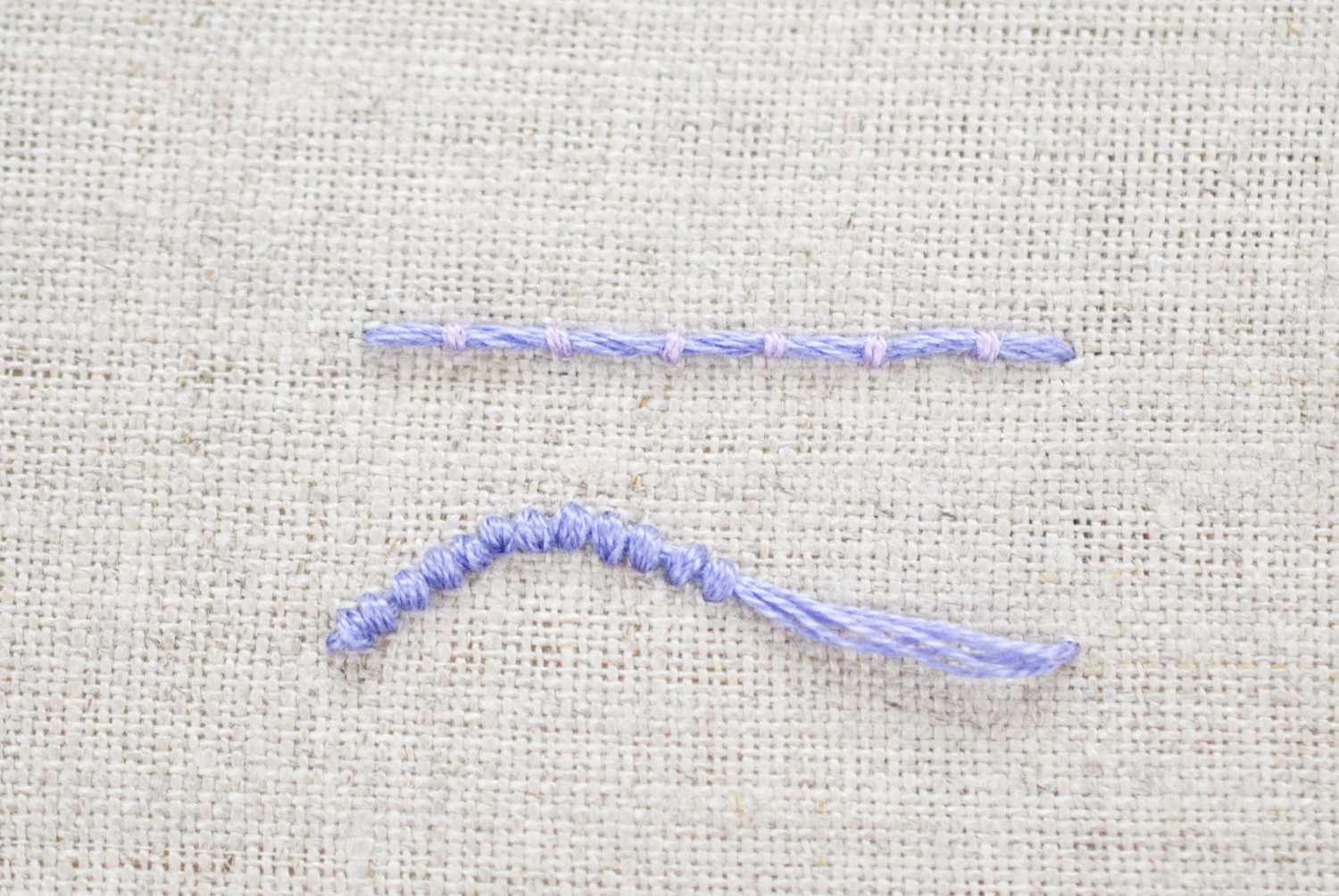
The couching stitch is hardly a beginner-friendly stitch but it is important that anyone looking to master embroidery learns it. The stitch uses 2 lengths of thread at once. One length remains on the surface while the other holds it in place with tacking stitches.
The stitch is best suited for creating texture, making outlines and filling an area. What’s more, the stitch works with ribbon, yarn and other materials.
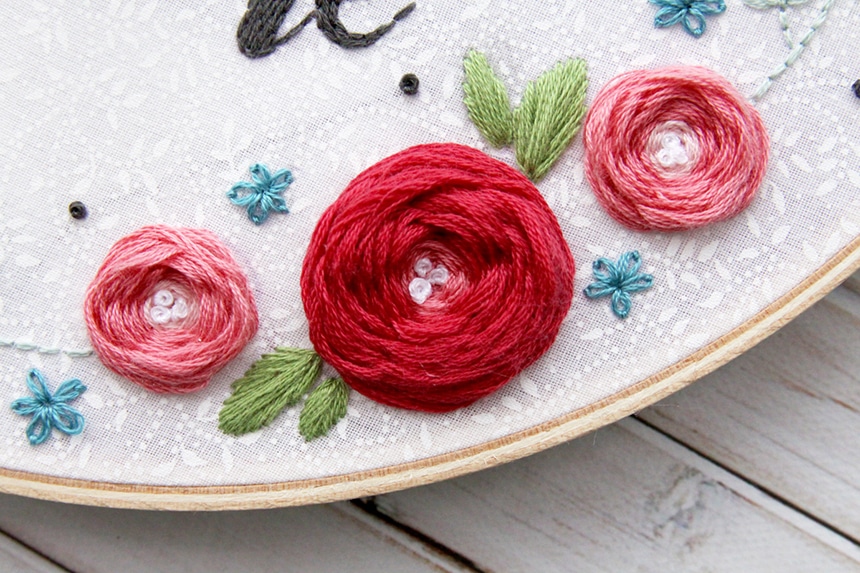
A single glance at this stitch and you would rule it out to be a complex embroidery stitch. On the contrary, it is a very simple stitch. Working it involves making a star of straight stitches then weaving the tread to form a flower. The result should be a stitch that fills your hoop with beautiful florals.

This is the ultimate stitch for making borders and frames. It’s perfect if embellished or layered with other stitches.
The feather stitch is a linked stitch with open lines that look like they are moving. It is this look that makes it excellent for stitching foliage, seaweed, feathers, scales and other designs.
This is a type of stitch commonly used for making petal or floral designs. Working the lazy daisy involves making a loop and creating a small stitch at the end of the loop. The result should be the image of a daisy petal.
Pro Tip: when stitching, use an embroidery hoop to help you maintain even tension. According to expert reviewers, the Similane 6 Pieces Embroidery Hoops is one of the best embroidery hoops that money can buy. The hoops have a long-lasting top-quality plastic build. Plus, they offer unmatched versatility with their size variations.
Hand embroidery is the most popular form embroidery in the present day. In essence, it is the embellishment of garments or fabrics with embroidery stitches. Here are the different types of embroidery:

This includes, the drawn thread embroidery Trusted Source Drawn thread work - Wikipedia Drawn thread work is a form of counted-thread embroidery based on removing threads from the warp and/or the weft of a piece of even-weave fabric. The remaining threads are grouped or bundled together into a variety of patterns. en.wikipedia.org and the pull thread embroidery Trusted Source “Play Date” Topic – Pulled Thread | Rocky Mountain Web Stitchers Welcome to our Pulled Thread “play date” topic. First, let us discuss the technique itself. Let us first start by discussing exactly what Pulled Thread is. rmwebstitchers.org . Draw thread embroidery involves the drawing of thread from fabric then tying the remaining thread in many different patterns. This leaves open spaces on the fabric to form a pattern.
Pull thread embroidery doesn’t involve removing or cutting thread like draw thread embroidery. The technique requires you to create patterns with stitches that pull the fabric’s weave to form holes.

With this technique, thread in the fabric is counted so that stitches are symmetrically formed. Blackwork and cross stitch are some of the most popular counted thread work embroidery.The counted cross stitch involves counting the number of stitches on a pattern before transferring it on fabric. It sounds complicated but once you get the hung of it you will breeze through your projects.
Blackwork, another peculiar type of counted thread work embroidery has geometric looking patterns achieved by a double running stitch or Holbein stitch. The geometric designs give blackwork designs beautiful symmetry and it’s all because the threads are counted.
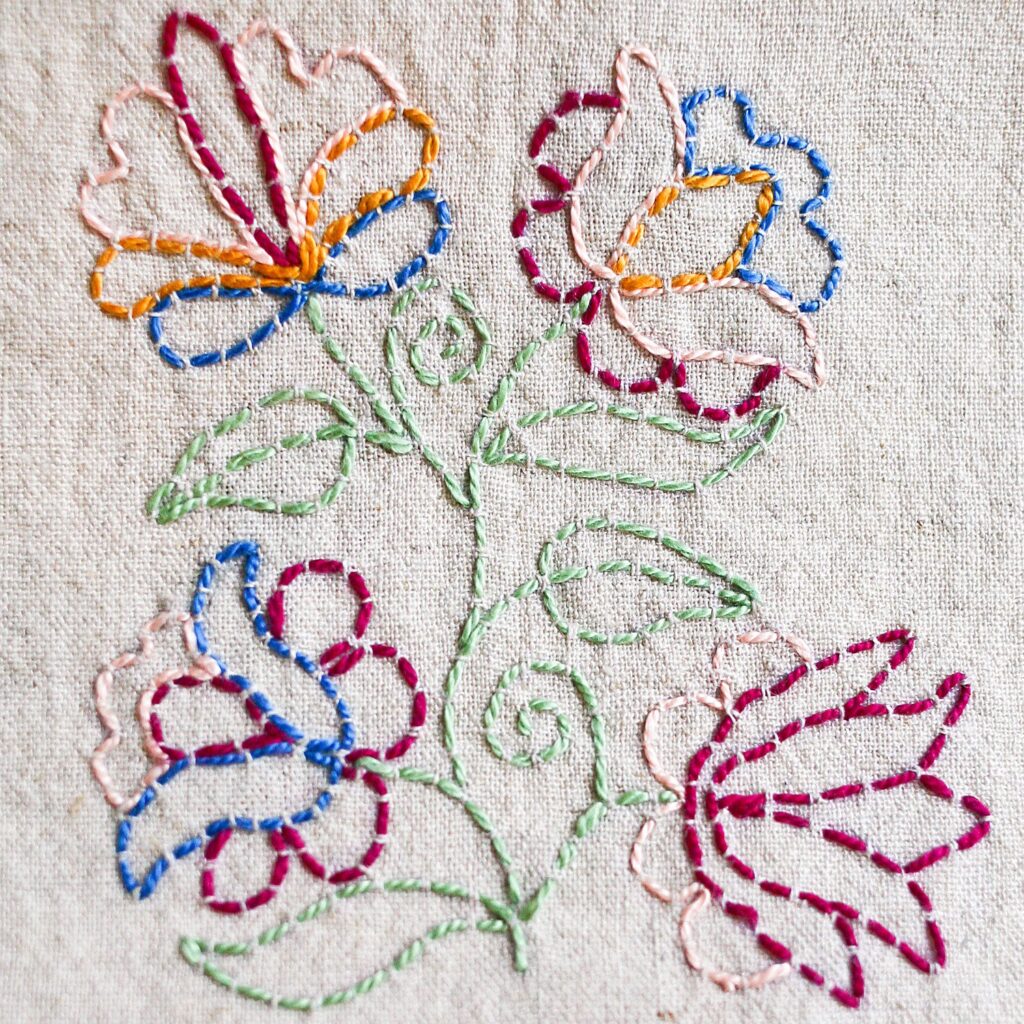
This simply involves the outline of the design being worked with stitches like chain stitch, stem stitch, outline stitch and backstitch. The rest of the design is usually left bare to show the ground material or the piece of cloth used.
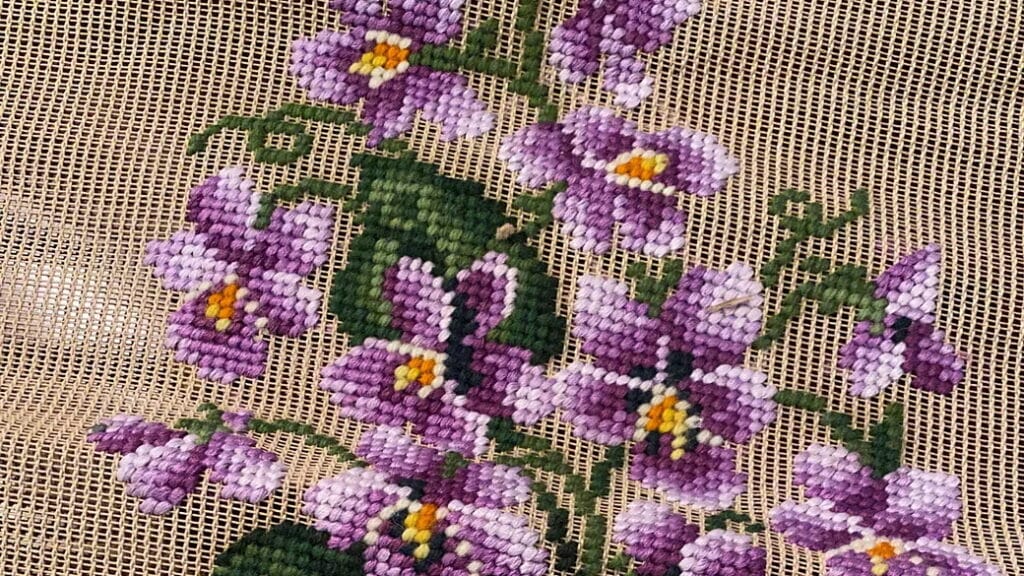
Needlepoint is also a form of counted thread embroidery. It is a type of canvas work. It is traditionally stitched with thread through a stiff open-weave canvas. The designs usually cover the entire canvas. You can work needlepoint with a variety of stitches but the tent stitch is the most commonly used stitch.
Needlepoint designs depend on the color changes of yarn to form patterns. The degree of detail of the designs depend on the thread count of the underlying mesh fabric. Since needlepoint designs are usually the least supple, it is mainly used to make eyeglass cases, wall hangings, upholstery and holiday ornaments among other things.
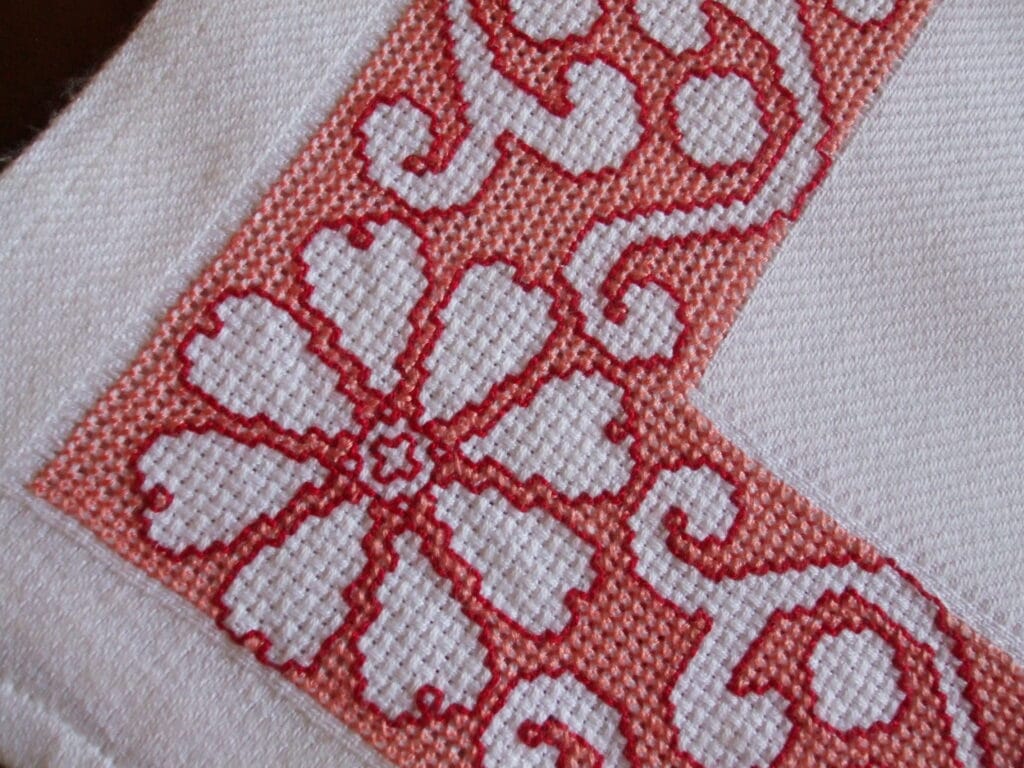
This embroidery technique is created by stitching the background in one color and leaving the design unstitched. There are 2 main types of void work; Assisi and Reversa. The main materials used include silk thread and high-count evenweave linen. You can create any type of design with void work but flora, fauna and figurative designs are the most popular.
Void work can be achieved with a variety of stitches. Any stitch that can cover the ground fabric while accentuating the pattern’s void can be used. Throughout history the most popular stitches used to work this embroidery have been back stitch, cross stitch, tent stitch and reversible-double running stitch.
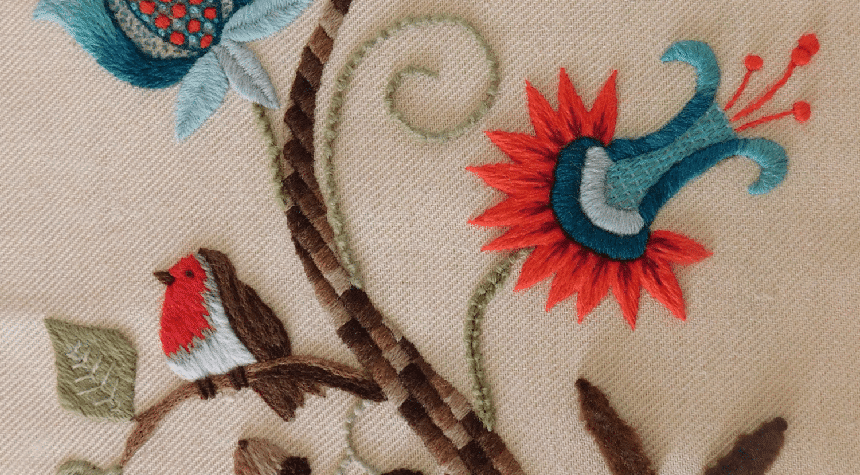
There’s nothing cruel about crewel work. It is a form of surface embroidery. Traditionally, it was done with wool threads, but nowadays other types of threads like silk and cotton are being integrated.
It is the wool thread that makes crewel stand out from types of embroidery. As for fabric, linen and linen twill are the most commonly used for crewel work. They have a close weave that keeps the stitches in place and at the same time are open enough to allow the large wool to pass through. Crewel embroidery can be worked with a variety of stitches but the laid stitch and padded satin stitch are top favorites for many.
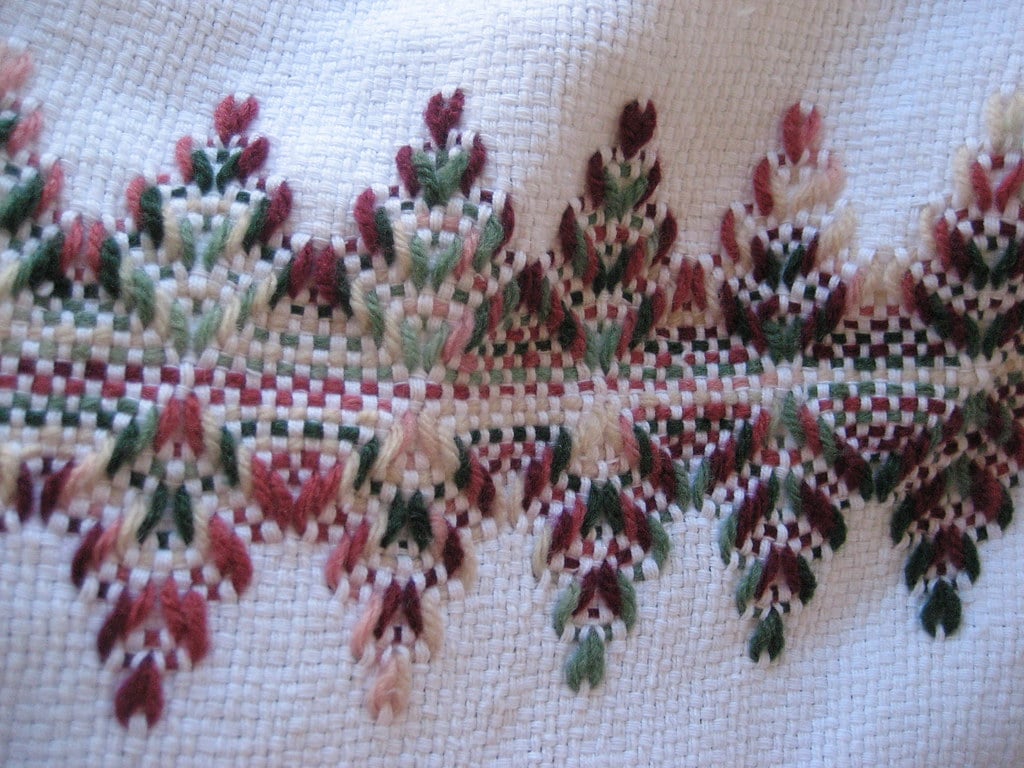
Also known as Swedish weaving or huck weaving, huck embroidery is a type of embroidery that combines a bit of surface embroidery with weaving. It gets it’s named from huckcloth, which is the main material used to work it.
Huck embroidery has an extensive variety of patterns. You can create simple bands, motifs or words. You can also create complex all-over designs. Huck embroidery is one of the easiest and fastest to work. This makes it a perfect choice for making random gifts for friends and family.
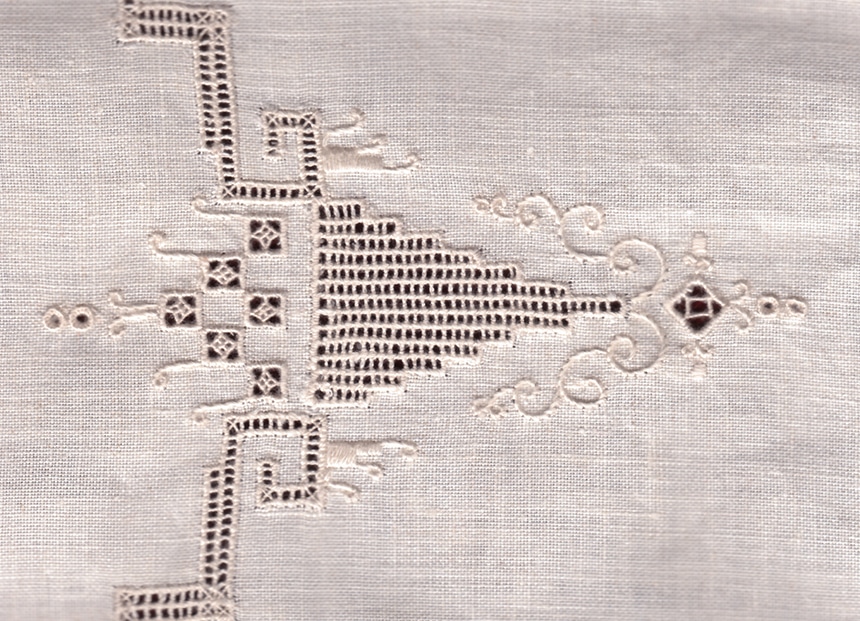
This is a needlework technique that involves embroidering designs and cutting out spaces from the fabric. It is normally worked on linen, but it can also be done on cotton and cotton/linen blends.
Cutwork is considered to be part of whitework embroidery. The focal part of the design is outlined by white threads then its elements are stitched independent of the fabric background which is finally cut off to leave an open window.
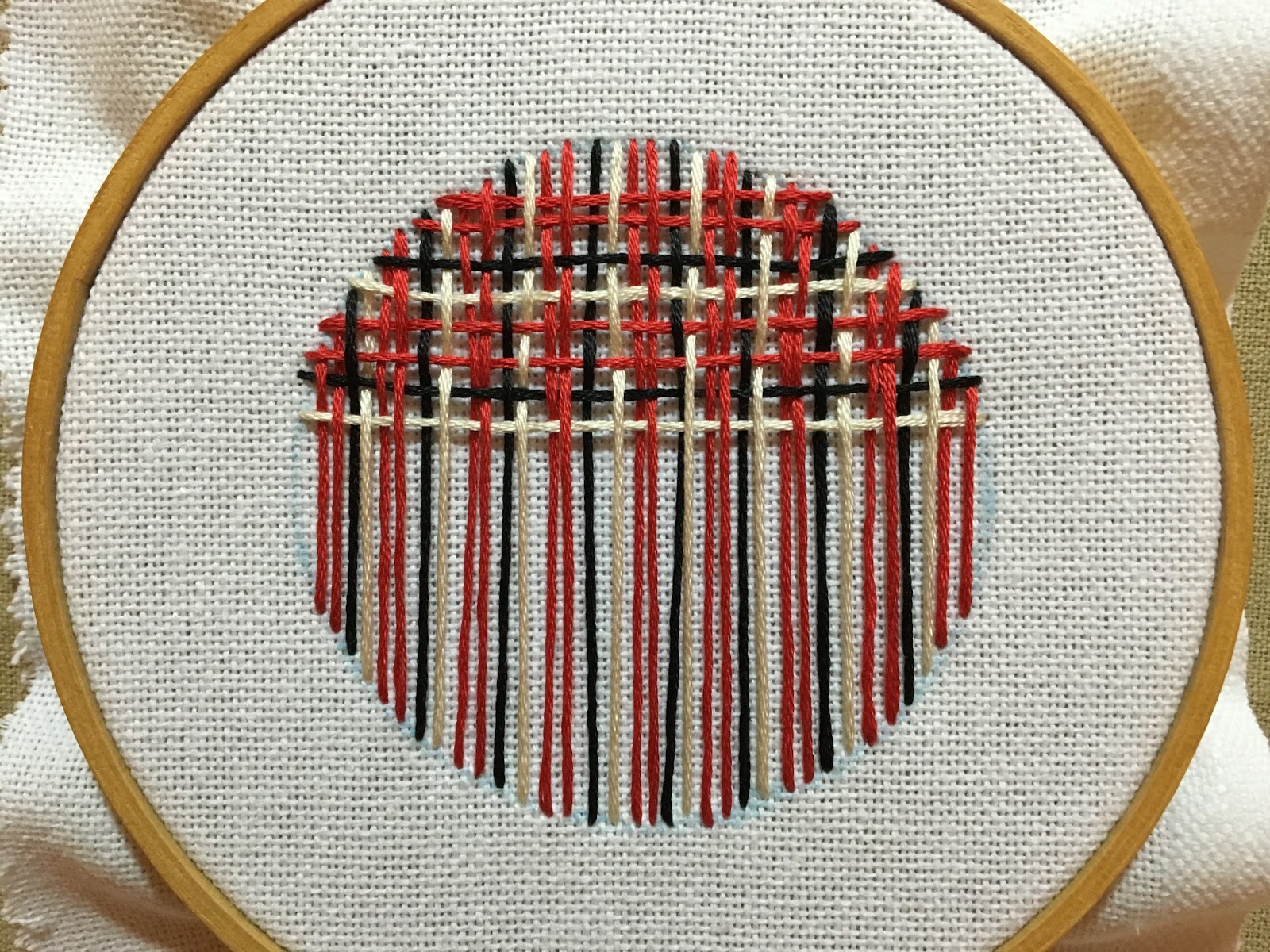
Also known as Persian open work, needle weaving is a simple embroidery technique that basically involves weaving embroidery thread on a fabric’s surface. You can create amazing designs by following a variety of patterns and using different kinds of threads with different textures and colors.
The most common threads used for needle weaving are warp and weft.
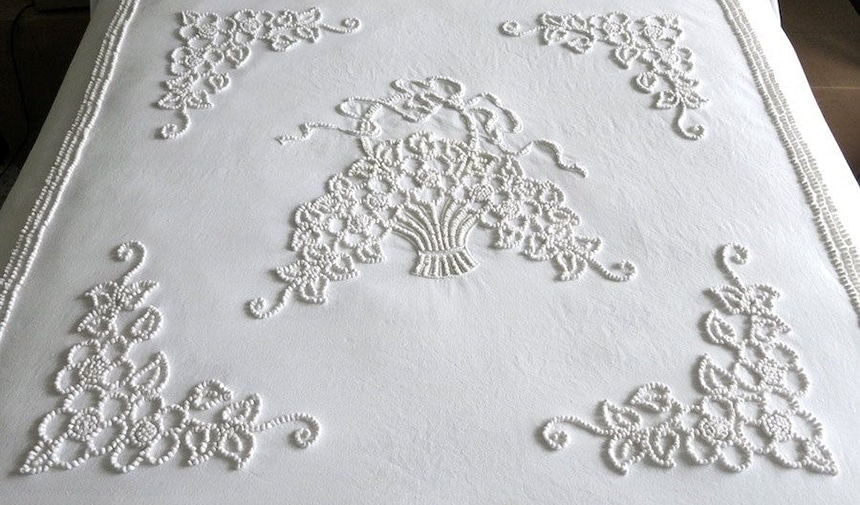
This is another type of classic whitework embroidery. It is worked with heavy thread on muslin. Candle wicking embroidery is unique as it is worked with colonial knot stitches. Colonial knots are much sturdier compared to French knots. This make candle wicking a top choice for embroidering items like quilts that are likely to see a lot of wear. They also use less thread.
As it is considered whitework embroidery, it is worked with white thread on unbleached muslin with white floss.
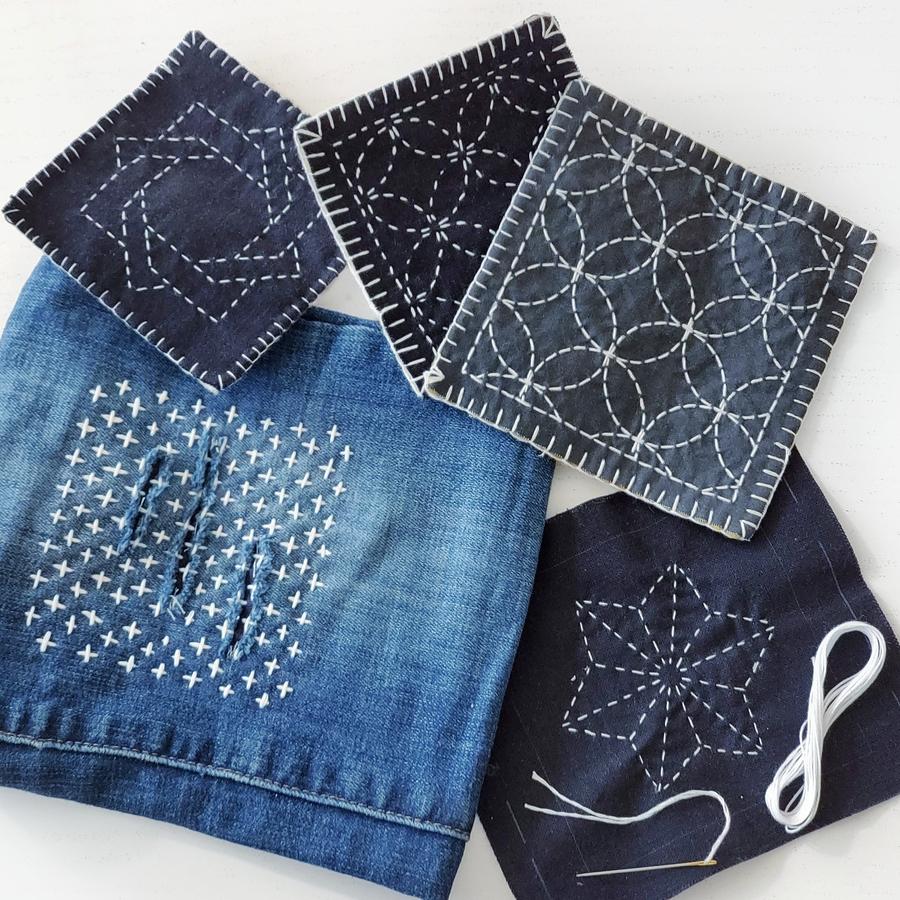
Sashiko originates from Japan. Sashiko means little stabs. It describes the small stitches used in this type of work. It uses the basic running stitch to create geometric decorative patterns. The patterns can be straight or curved lines of stitching neatly arranged to form repeating patterns.

This is a dimensional embroidery technique that uses pre-stitched pieces of embroidery, stuffed areas, and raised stitches to create realistic floral designs. It also used to create other designs like scenic pictures of animals and people.
Stump work can be done on any kind of ground fabric with either wool, silk or cotton thread. It can also be worked with a variety of stitches from simple ones like line stitches to more complicated ones like lace stitch and filling stitches.
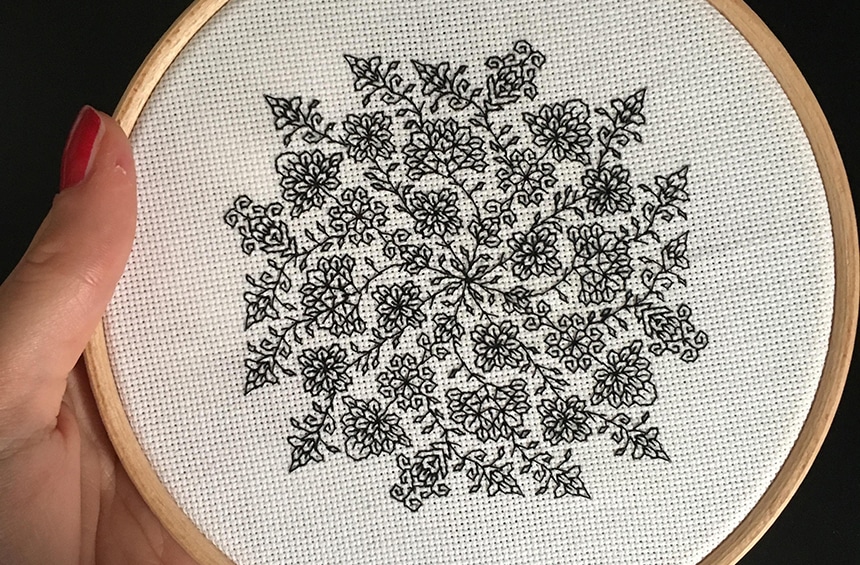
Blackwork dates back to the 16th century. It gets its name from the traditional use of black thread on white fabric. It uses a variety of filling patterns created with the Holbein stitch which, essentially, looks like a backstitch but is in actuality a reverse running stitch.
Modern blackwork is highly used to create geometric designs and beautiful picture embroidery. Unlike the traditional blackwork, it incorporates surface techniques and counted cross-stitch.
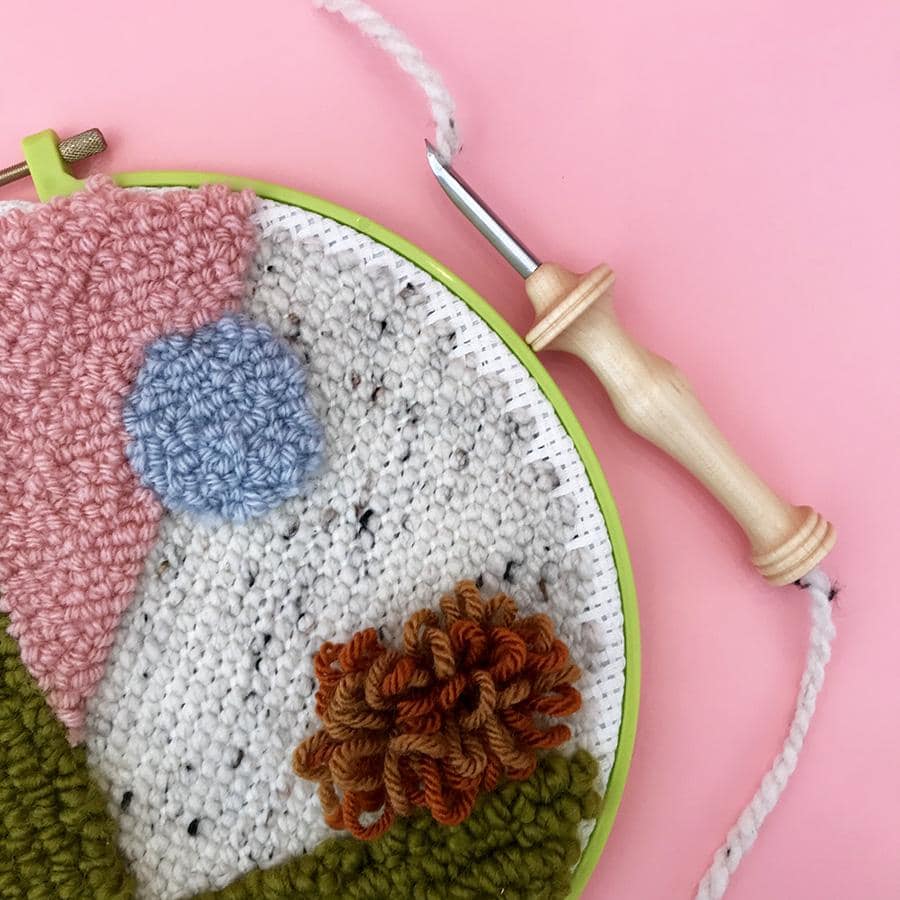
This is a type of embroidery related to rug hooking. It has been around for hundreds of years. Punch needle involves pushing embroidery yarn or thread through fabric while the needle remains on the surface. The result is a highly textured design with loops similar to those of a rug.
It is not the easiest to learn but with lots of practice you’ll be able to fill a large area in no time.
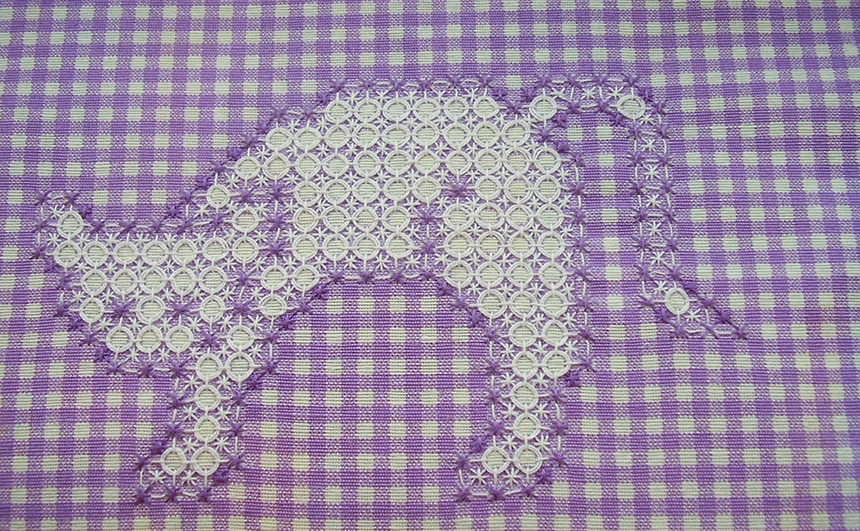
The Chiken scratch embroidery also goes by the names; Depression Lace, Broderie Suisse, and Australian Cross stitch. It is a lacy variation of cross stitch and is traditionally worked on Gingham fabric. The threads commonly used for this technique are the perle mercerized cotton thread and the stranded embroidery thread.
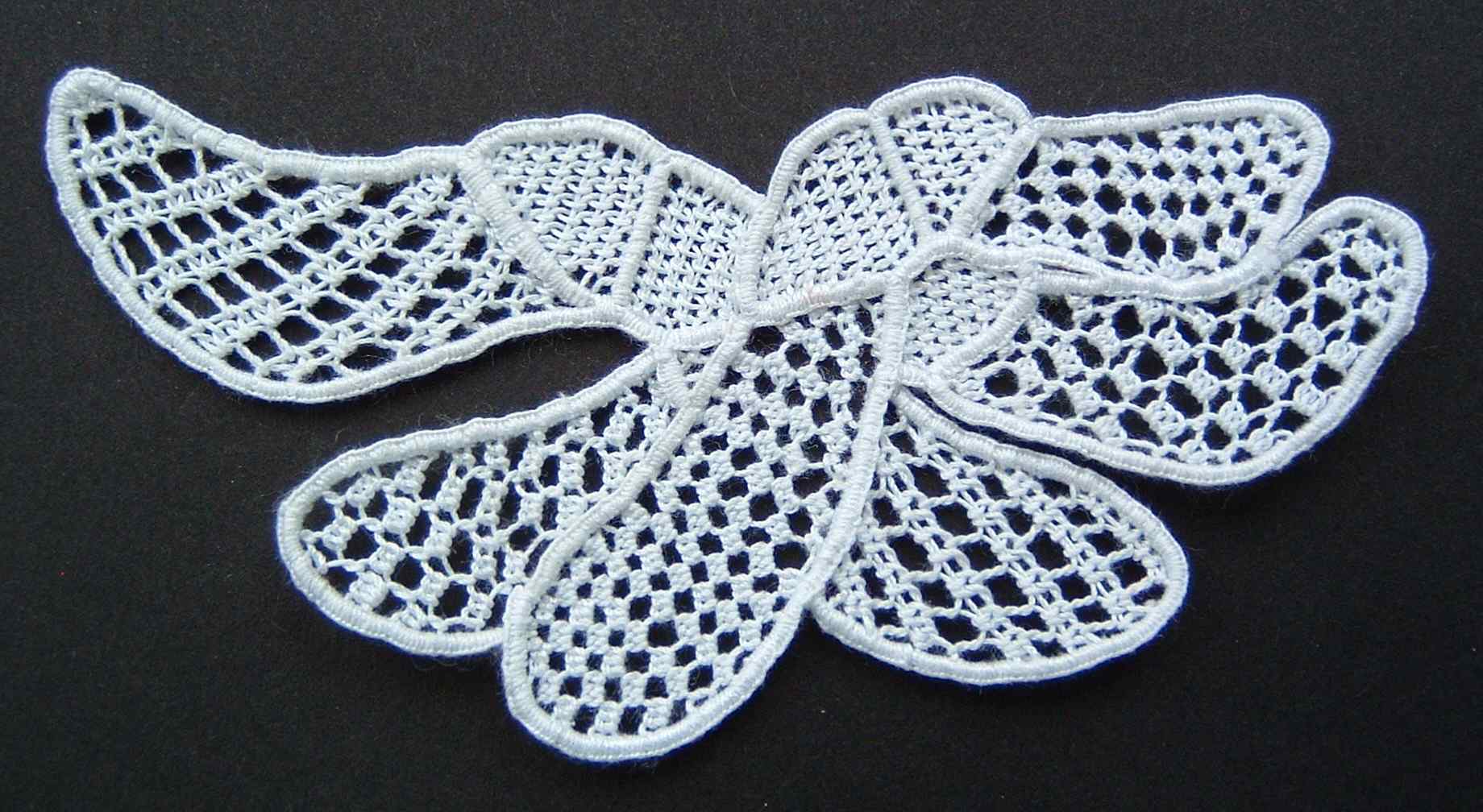
Needle lace has many variations and names. Some of them include; Rose Point, filet lace, Alencon lace, Reticella, and Punto in Aria. In essence, needle thread is lace made with needle and thread on fabric ground and sometimes part of the fabric is cut off. Not all types of needle lace are worked on fabric ground. Some are first worked on paper or tissue then transferred to the fabric.

This is the most regal embroidery technique out there. For a long time, it was only accessible to the wealthy. It was mostly used to adorn military wear, ecclesiastical textiles, and clothing for nobility.
In the present day, Goldwork is more accessible. The most distinguishing thing about the embroidery is the metal threads used to work it. Some threads have metal wrapped around fibre while others are fully metal. Embroiders like to combine goldwork with silk shading to complement the rich gold color.
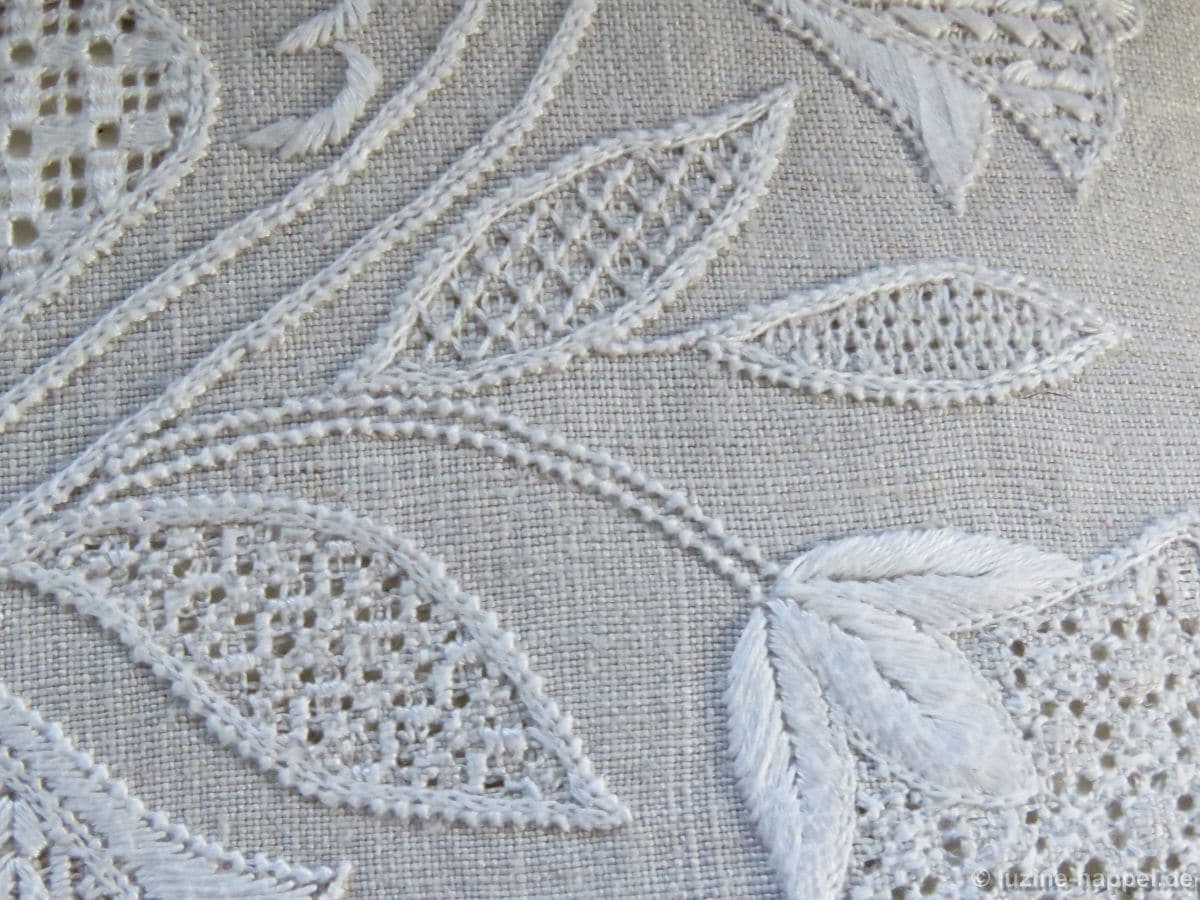
This is another Whitework embroidery technique. It is named after the Schwalm region in Germany where it originated. The embroidery combines whitework, pulled thread work and drawn thread work. It is traditionally worked with white thread on white linen, but nowadays people work it on colored linen with white thread or colored thread on white linen.
The embroidery is mostly used to embellish household linens like table cloths.
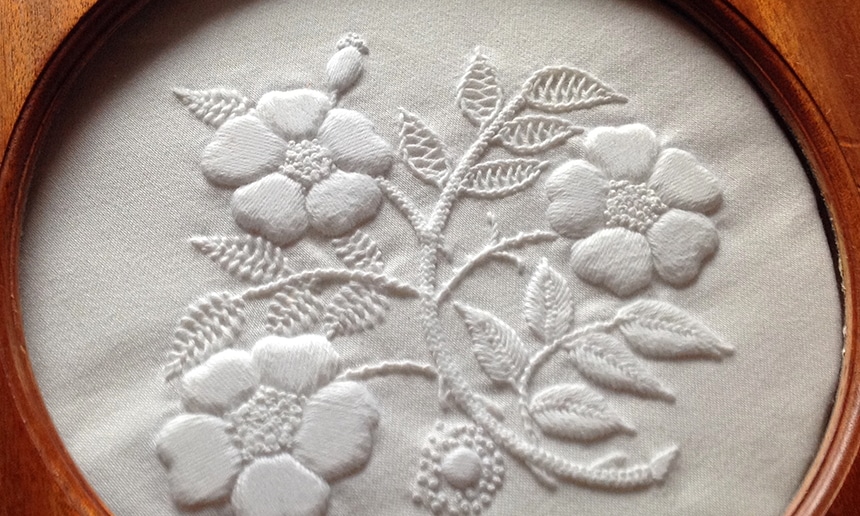
Mountmellick embroidery is also a whitework technique. It gets its name from the Mountmellick region in Ireland where it originated. Originally, it was worked on cotton sateen that have sheen with matte cotton threads. It is the contrast between the fabric and the thread that gave Mountmellick its unique look.
Various stitches are used to work Mountmellick. They create a highly textured surface on the fabric. Branches, flowers and fruits are some of the most common motifs made with mountmellick embroidery.
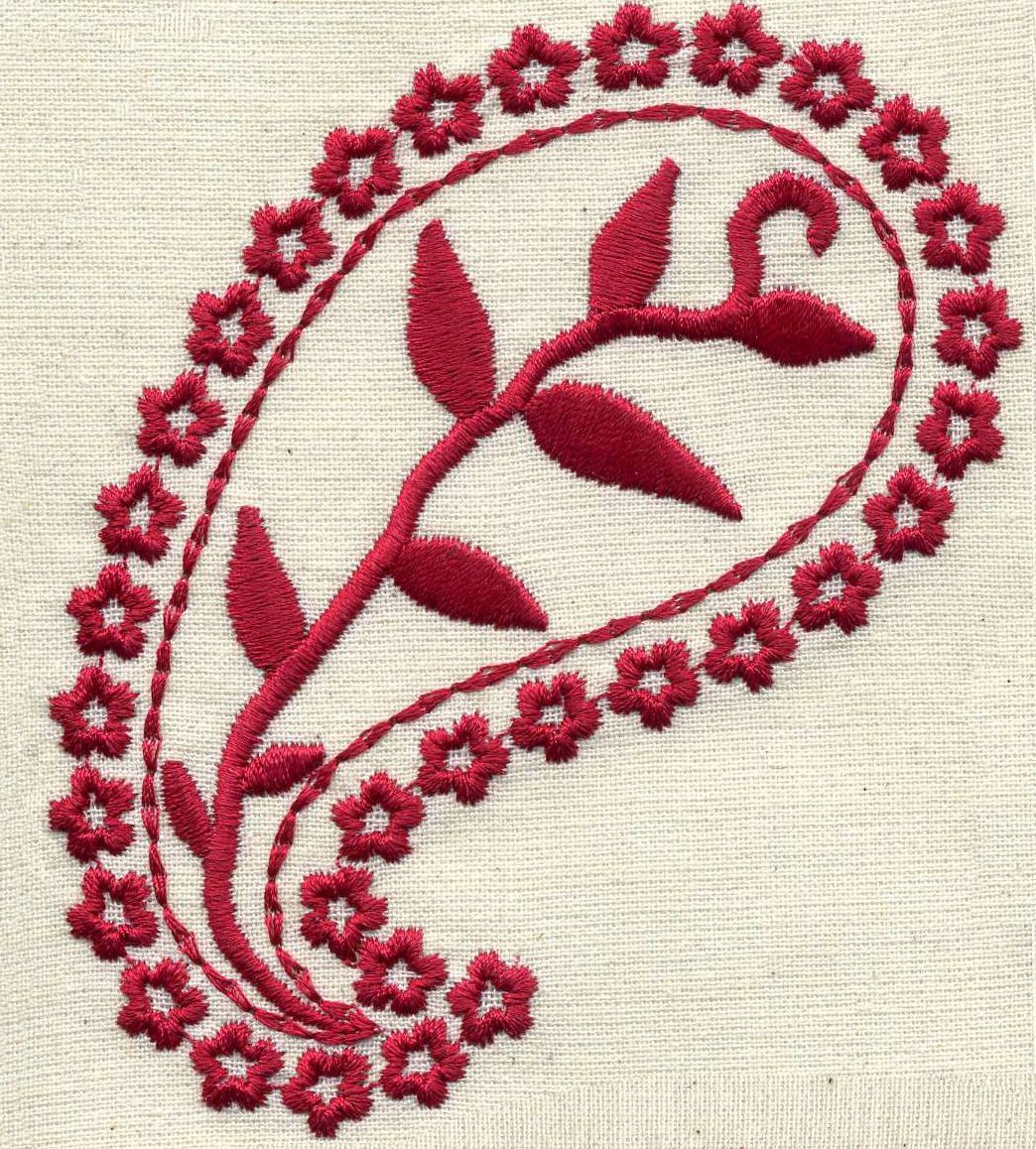
Redwork embroidery lives up to its name. It is worked with red colored threads on a white or cream fabric ground. The outlines of the designs is worked with any type of outline stitch including back stitch, split stitch, and stem stitch.
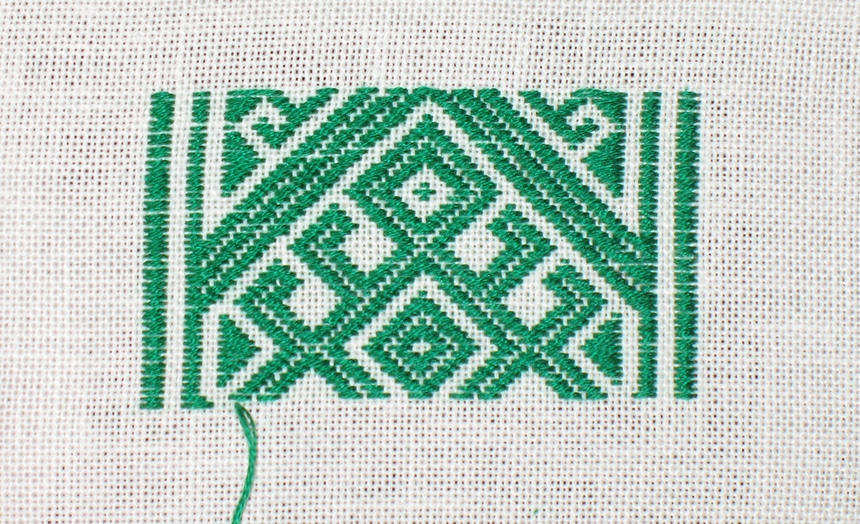
Pattern darning is like a cousin to the darning stitch. It’s pretty much darning done in a pattern. It is a counted thread embroidery technique, mostly worked on evenweave fabric like linen to allow the warp and the weft thread to be visible.
The running stitch is used to work it, either vertically or horizontally in a regular pattern. You can use pattern darning to repair holes in a piece of fabric while decorating it at the same time.
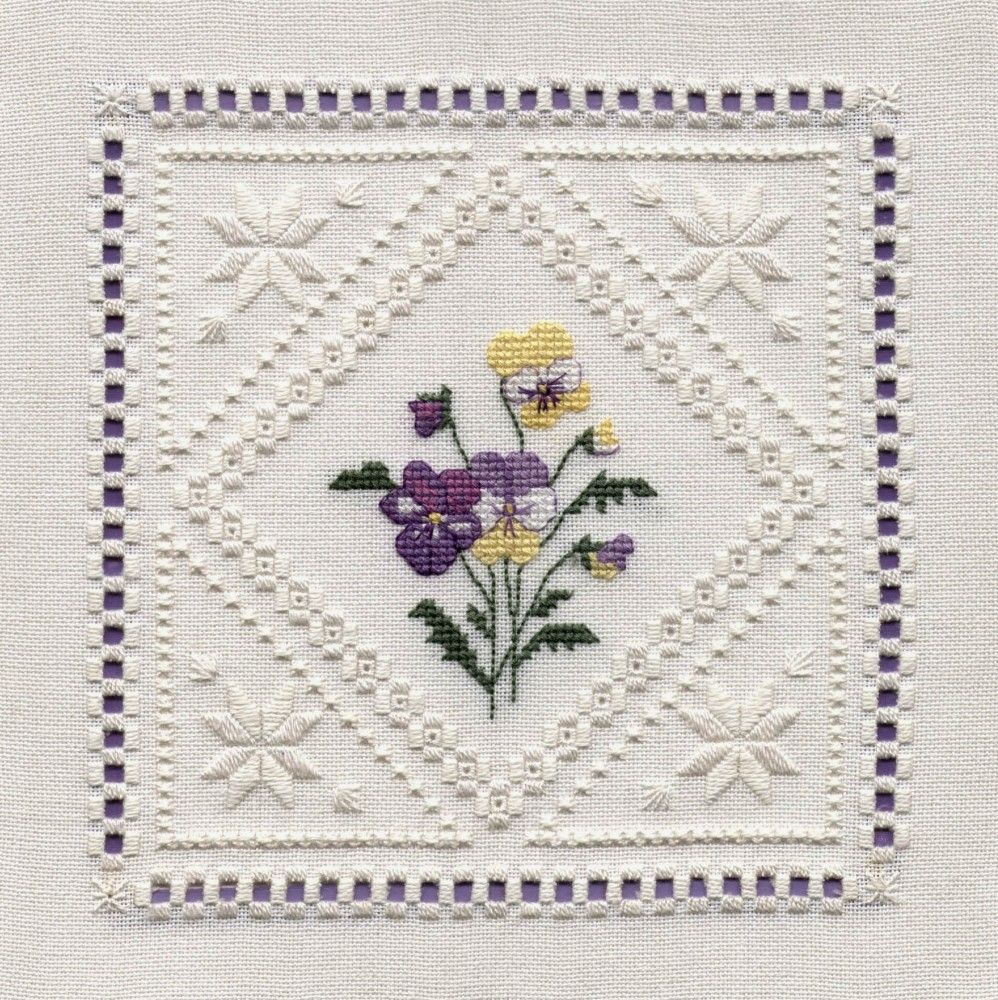
The Hardanger technique gets its name from its Norwegian origins. Traditionally, it is a whitework technique but you can introduce some color if you like. Most of the designs are geometric and it is worked using counted thread and drawn thread work techniques.
The simple satin stitch and decorative surface stitches like cable stitch, running stitch, French knots, and fly stitch are the most common techniques used to work the Hardanger embroidery.
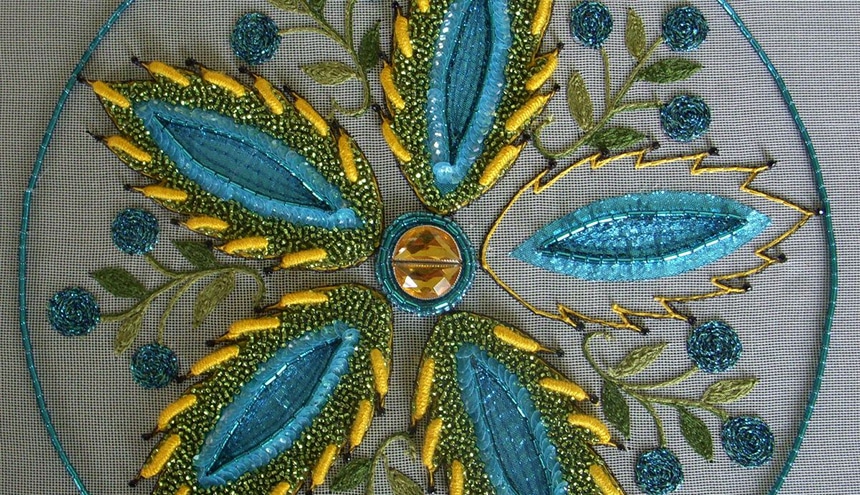
Also popularly known as Aari, Tambour work is a form of chain stitch embroidery that uses an Ari hook to make a chain stitch. The hook catches the thread from the back of the fabric to create a loop of the chain stitch.
Tambour work is popular in India, where it is known as Zaladkozi. It is widely used in products made in Kashmir. Kundan and other semiprecious stones are added to the work to make it sparkle.
This is like a cousin to couching. They are very similar. With couching, you only lay one thread then stitch it onto the fabric while with laid work embroidery, you lay 2 or 3 layers of thread before stitching them onto the base fabric.
The first 2 layers are laid parallel to each other, filling the design then the 3rd layer is laid over the set. The layers of thread are then attached to the fabric with small stitches.

Just like its name suggests, this embroidery is done with silk or synthetic ribbon threaded on a needle. The silk ribbon embroidery gives a phenomenal 3D effect. Often, the silk ribbon kits have designs printed on them so that you can do ribbon work on them.
The embroidery can get enhanced further with various embroidery stitches and beads.
This is embroidery done on net fabric. Embroidering on net is one hell of a skill. The open se-through nature of a net makes the technique a real challenge. Drawing the design on the net is the first challenge that must be conquered. Ensuring the designs have no knots or backstitches is another difficulty.
The variants of net embroidery include; lacis embroidery, filet embroidery, and carrickmacross.
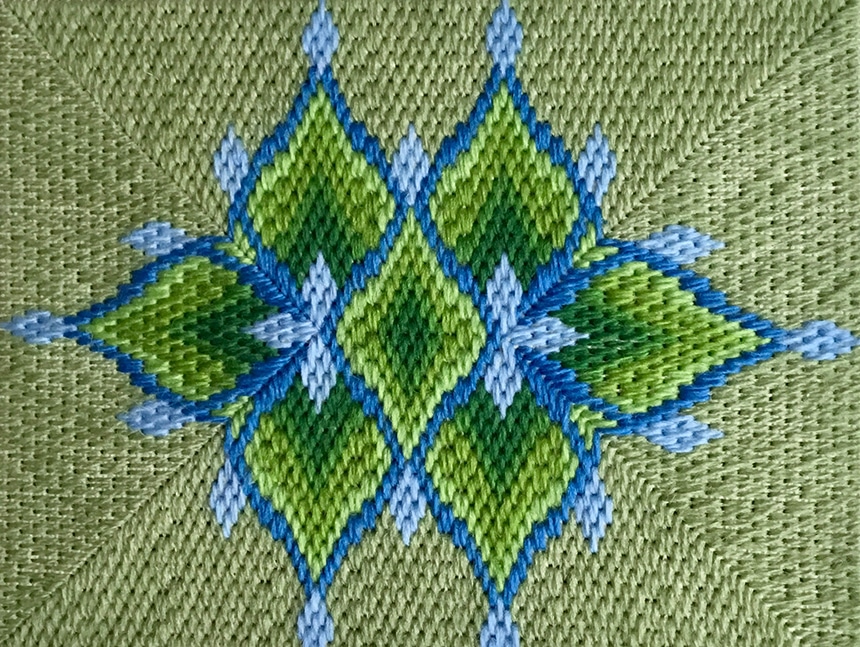
Bargello embroidery also goes by the names flame, and Florentine embroidery. It is s form of vivid embroidery with a shading effect. Bargello is mostly worked on canvas with long and straight vertical stitches. The stitches create geometric or zig zag designs that give a phenomenal visual appeal.
Phulkari is a form of counted thread embroidery. It is popular in India and is mostly used to create Indian brides’ clothing. It is worked with a darning stitch and silk embroidery floss.
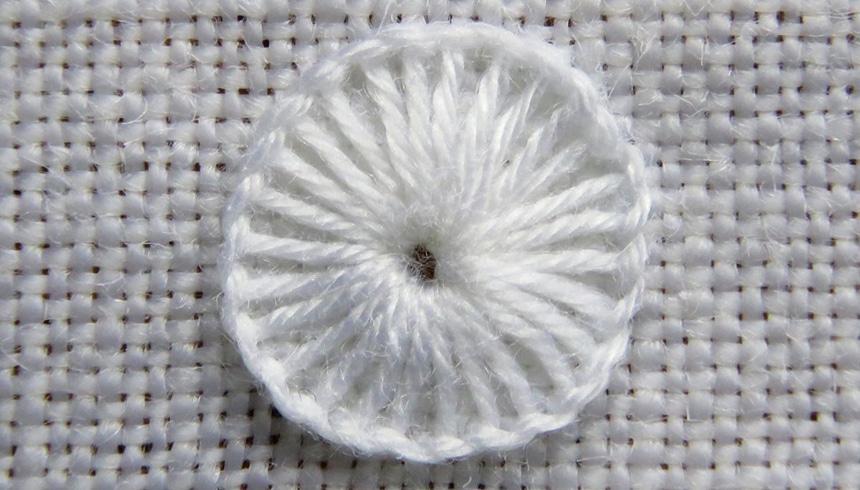
This involves the use of eyelets all over fabric. Eyelets are just holes made in any type of material and finished with either metal pieces or hand stitches.
This simply involves the stitching of beads onto the surface of fabric.
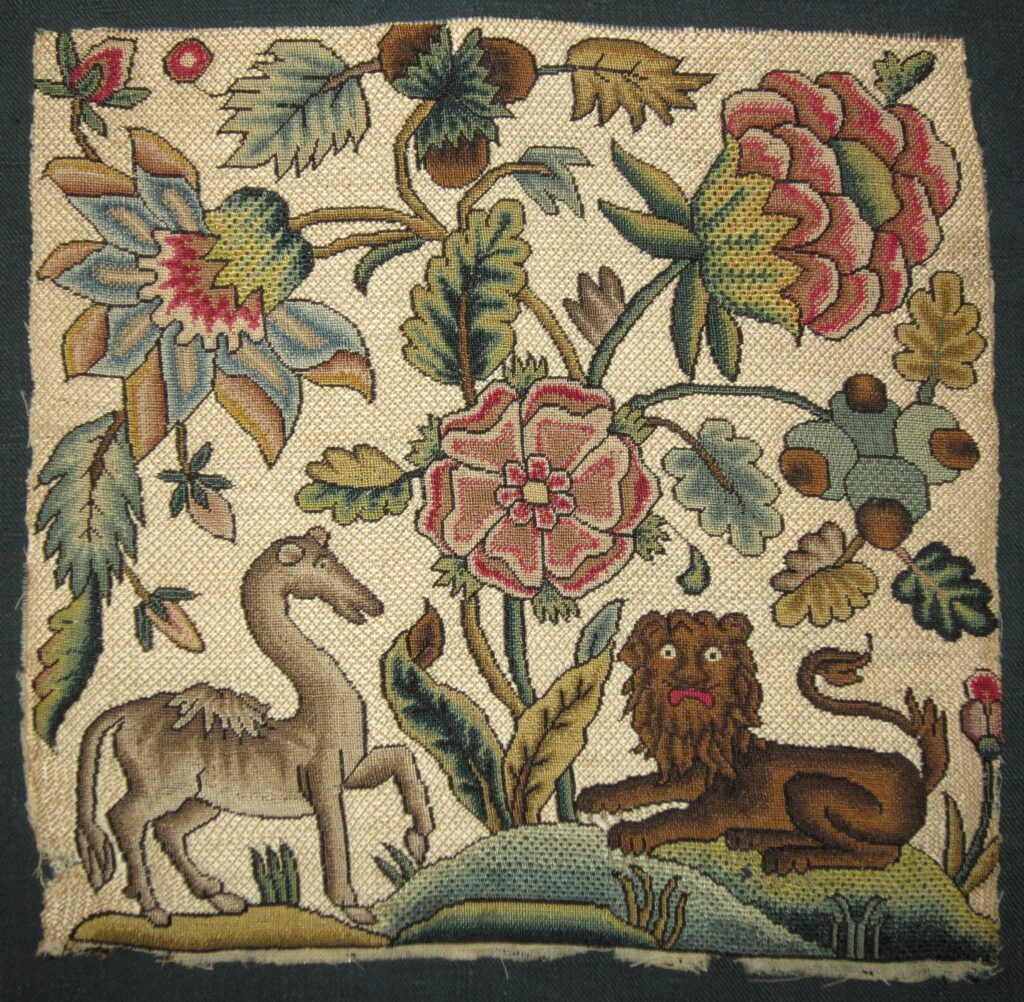
This is more of an embroidery design than a technique. It gets its name from James I of England. The style became popular under his reign. It is often confused with crewel work because it was worked with wool traditionally. Today, it can be worked with a variety of fibers, silk and metal threads to achieve great effect.
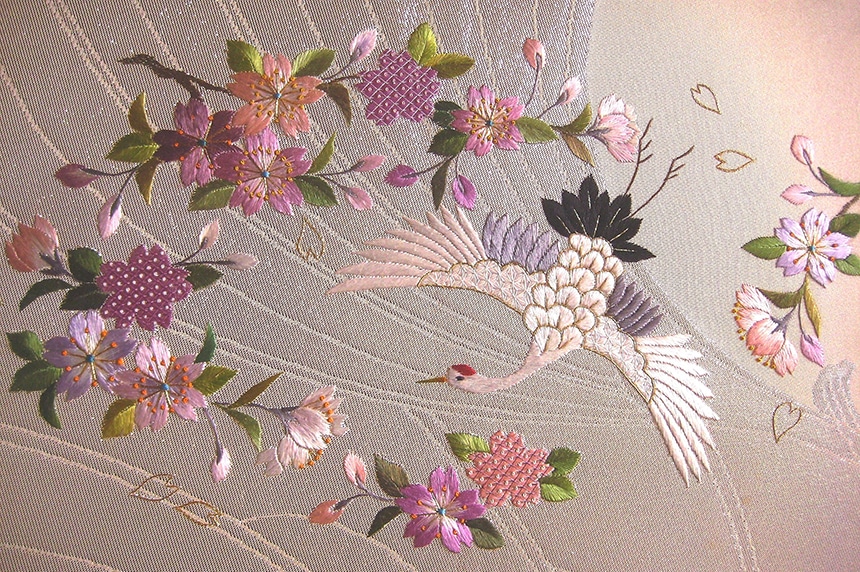
This a Japanese style that involves the working of delicate embroidery similar to paintings done with silk thread.
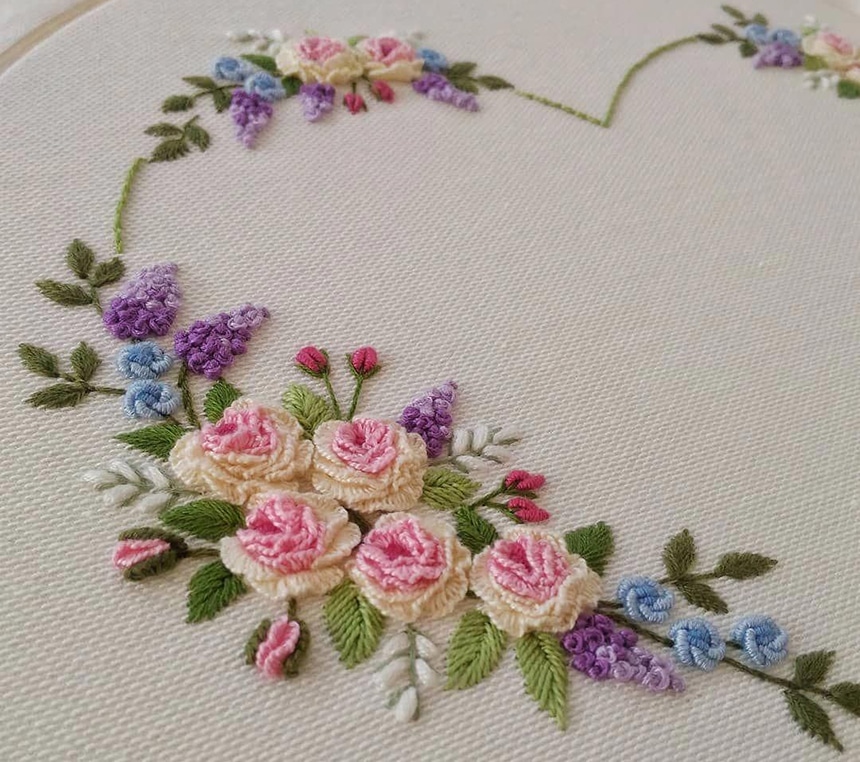
This is a dimensional embroidery mainly used to created floral designs. It is a highly textured form of surface embroidery. It distinguishes itself from other types of surface embroidery with the type of thread it uses. It is worked with rayon embroidery floss which has a high sheen. As for stitches, French knots, drizzle stitch, and bullion knots are the most common ones used to create the dimensional floral elements.
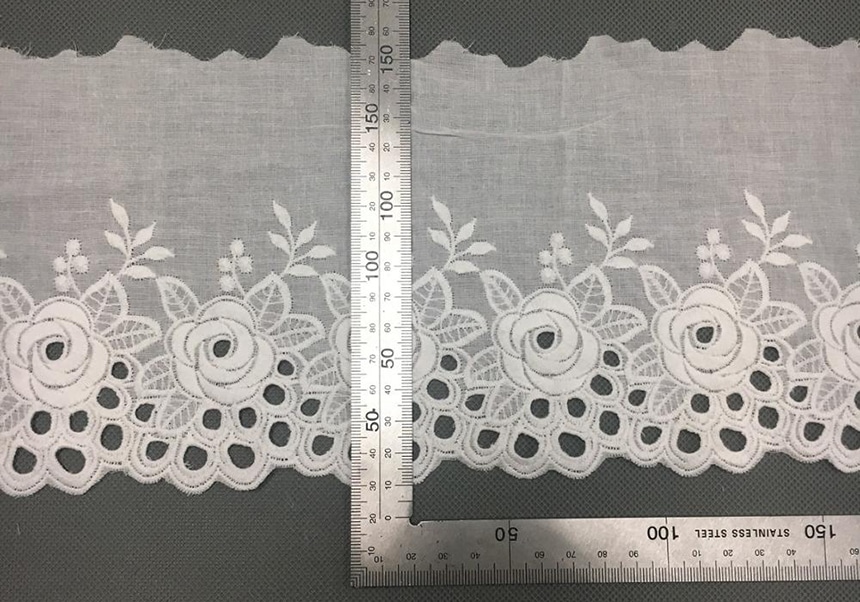
Also known as St Gallen embroidery, Swiss embroidery is a whitework technique that involves embroidering a design on a base fabric with white thread then dissolving it in a chemical surface to form a beautiful lace.
Chinese embroidery has been around for centuries now. It has multiple variants including shu embroidery, Yue, Gu, Suzhou and Xiang embroidery. Here Trusted Source Chinese Embroidery Embroidery, a folk art with a long tradition, has an important position in the history of Chinese arts and crafts. en.chinaculture.org is more information on the different types of Chinese embroidery.
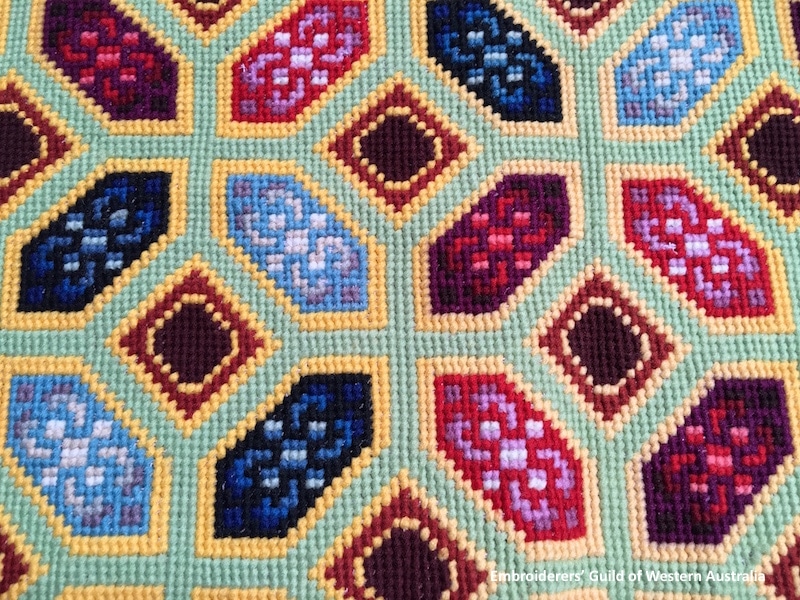
This is an intricate embroidery that is worked with tapestry wool yarn on canvas. It’s an all-over embroidery work that uses half cross-stitch in attractive bright colors.
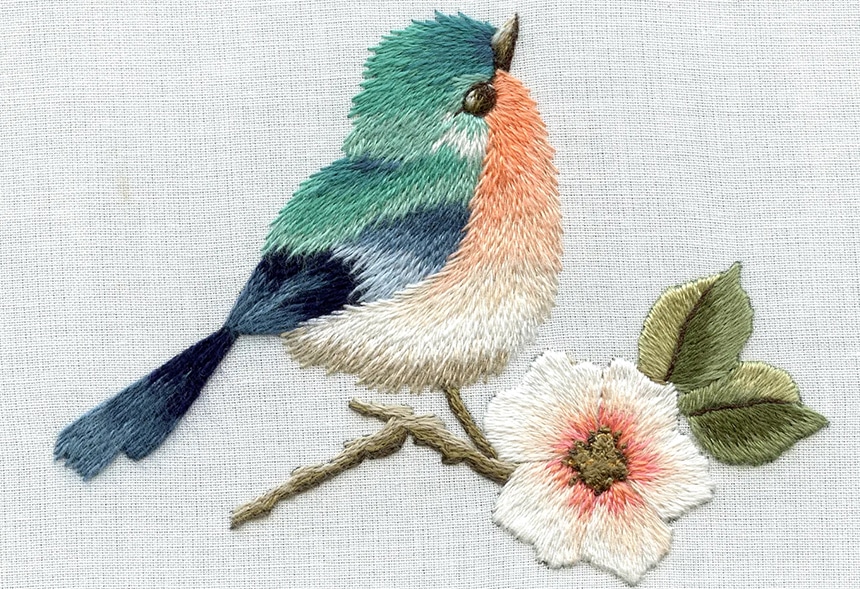
Also known as thread painting, silk shading, or long-and-short stitch shading, needle painting is an embroidery technique used to fill areas and paint images with needle and thread. It is worked using the long and short stitch, though other types of stitches can be used to achieve a more realistic design.
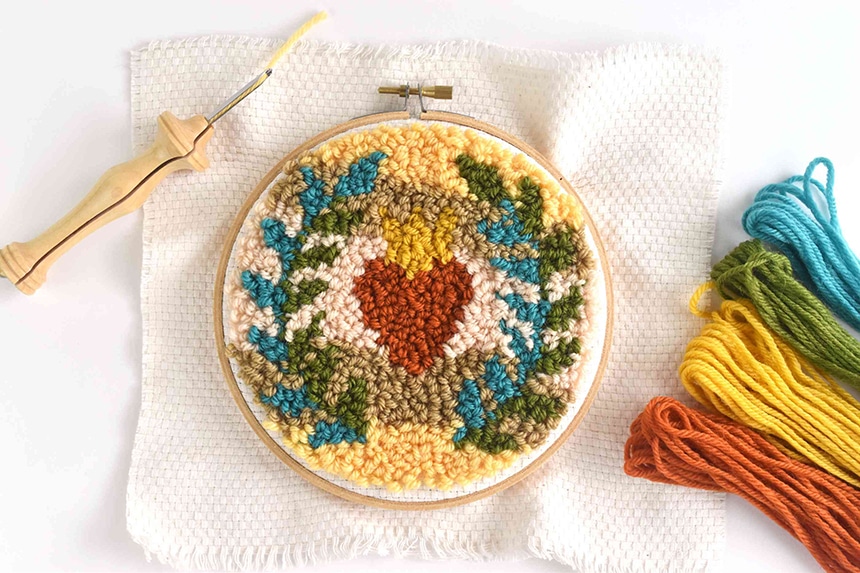
Famously known as needle punching, this is a type of embroidery that involves filling designs with small loops that are made with a special needle punching tool.
There are multiple types of embroidery that make embroidery an interesting art. We have covered most of them together with the different types of embroidery stitches. As a beginner, you would get a rough idea of how most of them work from the details. You can also invest in the best embroidery book for in-depth information about the various types of embroidery and needlecrafts.
The The Royal School of Needlework Book of Embroidery is one such book, highly acclaimed by expert reviewers and users. The book is a top choice for many because it features clear step-by-step stitch guides. It is also endorsed by the Royal school of Network which is known to teach hand embroidery to the highest standard.
